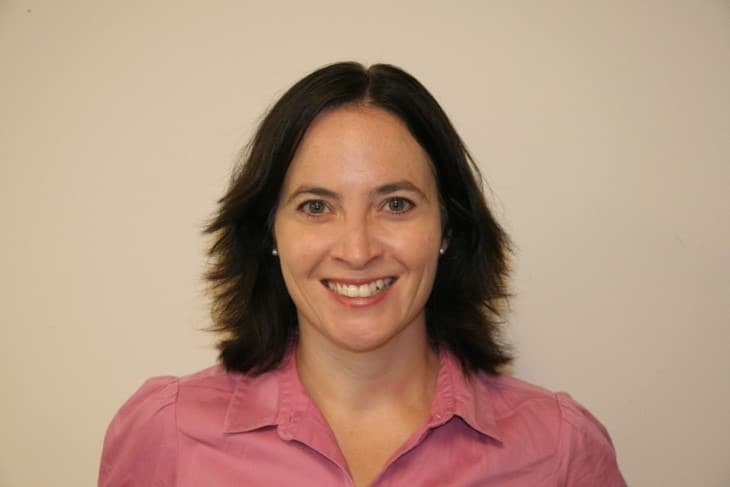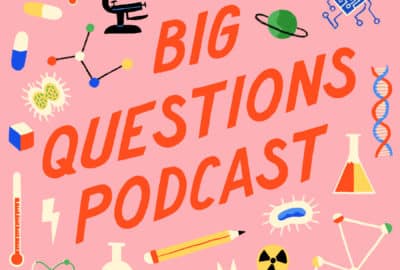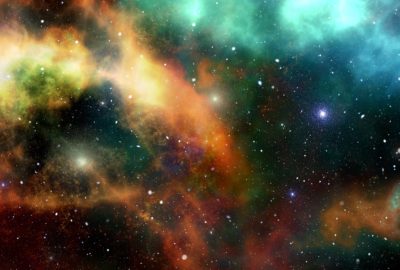What time is it on the moon?
Wednesday 3rd Jul 2024, 12.30pm
Scientists are returning to the moon, but when they get there, what time is it?
Dr Carly Howett from the Department of Physics explains the basics: what time is, and how we found a globalised way of understanding time zones so we can meet for a 3pm coffee or international video call, and everyone is in the right place at the right time.
But how does that translate to space and why could the consequences of incorrect timekeeping be disastrous for space craft docking missions?
If you want to get to grips with the weird and wonderful world of lunar time, then tune in to our latest podcast to find out more!
Emily Elias: Trips to the moon are back, but when you get there, what time is it? Like, what time zone is it? I mean, this is just a question that really just, like, wrinkles my brain. Earth, the moon, we’re so far apart. How does time bring us together? What is the link?
On this episode of the Oxford Sparks Big Questions Podcast, we are asking, what time is it on the moon?
Hello, I’m Emily Elias, and this is the show where we seek out the brightest minds at the University of Oxford, and we ask them the big questions. And for this one, we found a researcher who’s willing to go with us on a journey through time and space.
Dr. Carly Howett: So, my name is Dr Carly Howett and I’m a Professor of space instrumentation at the University of Oxford.
Emily: Okay, so let’s start with the basics. How does time work?
Carly: Well, the basic concept, we sort of have this circadian rhythm, right? We understand daytime and night time, and those things are sort of built into us as people. And so the old fashioned way of doing it would be midday is when the sun is directly above you and you would wait until the earth turned and it’s midday again. And that’s your day, right? That’s the length of a day. It’s the sun at the highest point to the sun at the highest point, and then everything else breaks down from there.
You could break those down into hours. You can break those hours down into minutes, you can break those minutes down into seconds. But of course, that works in a “I’ll see you at home at some point” kind of way, but it doesn’t really work at the “okay, let’s meet at this place at 03:00 in the afternoon”, right? We need to, ,e need to be a little bit more precise in order to do that. And so over the years, we’ve developed ways to do it.
Emily: So, for me, my family is in Canada, and so midday in the UK and midday in Canada, very different things. How did we agree on creating a time that was then globalised and we all understood what a time zone meant and what a midday meant to us in the big picture?
Carly: Right, 300 years ago, it didn’t matter really what Canada time was on because you were never going to speak to them in real time, you might send a letter. And so the origin of setting up even within the UK (so, before we start moving internationally, let’s start with the UK), across the UK, we had different time zones.
Midday in London. I’m based in Oxford, so the time in Oxford is five minutes difference. Midday occurs five minutes later in Oxford than it does in London. And there was this idea of Oxford time, and actually, that’s still registered and recognised in Oxford. When I give a lecture, it starts at five minutes past the hour. And the reason for that is because it’s on the hour at Oxford time, but that’s five minutes later than GMT.
So there’s these sort of weird foibles that still happen, and that’s a hangover. And it was the invention of the railway that actually, really was one of the first things that made us need to have a universal time. Right? You don’t fix a problem if it’s not a problem. And it wasn’t until we got to go fast enough on the railways that we started to need to understand, ok, “what time is this train getting in?” because we don’t want it to hit another train that’s coming from a different direction. Right, what is midday? You know, how does that relate to the time in London?
In November 1840, that was when the UK time was synchronized across the railways in order to reduce accidents and near misses. And all the times were set to London time which was defined as being Greenwich Mean Time. And so, in 1880, there was a law that basically said, “no, the whole of the UK is going to be on this time”, and that was set to Greenwich Mean Time. And that was really the first time in the UK that the UK had had a time zone, right?
So now all of the UK is in a single time zone. And we’d already talked about how a day is made up of these things that we call hours, and it’s broken up into 24 of those. And so, then you can sort of understand how those chunks work out, right? If each span of distance, right, is an hour, you can break up the whole of the longitude of the earth into these 24 chunks. And that tells you how long an hour is going to be. Now, whether a country adopts it is up to them, right? Exactly where those boundaries lie is up to them. You can’t go to a different country and say you’re on this time zone. But countries that want to work together, it makes sense to be talking the same language when it comes to time.
Emily: So globalisation really jump started it of like, okay, now we need to know where time. And people like me moving around, wanting to talk to their families, obviously was like, oh well, we have to figure out a good time to set this call. So that’s on earth. Yes, but I’m assuming that the moon has time as well. The concept of time is not specific to the Earth.
Carly: That’s absolutely true. So, in some ways, it’s fundamentally the same. So, if you consider a place on the moon, right, just one location, say the middle of a canyon, and it’s going to be midday when the sun is directly above you, and you’re going to wait for it to rotate and it’ll be a midday again when the sun’s directly above you, right? And that’s a day due to our convention. For very old and weird reasons, we break that into 24 hours and you break that into 60 minutes, and then you can break that into 60 seconds. So, you can do exactly the same process that we’ve done on the earth, on the moon. Now, the tricky bit is how do those things relate to each other, right? And that’s where these differences come. This is where the conversation gets interesting.
Emily: So how does it relate to each other?
Carly: So, the reason it’s a bit tricky is because of something that was discovered around relativity, the idea that time is different depending on how close to a big gravity thing you are. So, if you’re very close to the sun, time is going to run at a different speed to if you’re close to the Earth and the moon is less massive than the Earth, about 81 times smaller than the Earth, 81 times less massive than the Earth, I should say. And so time is going to run differently on the moon.
Emily: Just like, fact!
Carly: Very slightly differently, but different. And so that makes it hard when you want to move between things, right. You have to understand those differences in order to make sure you’re talking about the same time. It’s a very small difference, is that moon time, if you had a clock on the moon and you had a clock on the Earth, you made two clocks. They’re absolutely identical, old pendulum clocks, say, and you kept one on the Earth, you sent one to the moon. The one on the moon would be at 1 second slower every 46 Earth years. So not a huge deal. Right. You’re never going to notice that. If it’s just a let’s meet up for a coffee and you’re using your Earth clock, but you happen to be on the moon, that’s going to be absolutely fine. But if you’re trying to do really, really intricate, especially science or engineering, knowing time is fundamental, and that’s where it becomes really important.
Emily: We’re in this sort of like, moon age part deux, I don’t know what they’re calling it, where all of a sudden, like, we’re going back to the moon, people are, we’re doing experiments on the moon again. So, like, how important does this 1 second become?
Carly: The important thing becomes when you’re trying to communicate which time zone you’re in. So imagine you’re trying to find out how far a rock is away from you. And the way you’re going to do that is you’re going to fire a laser and you’re going to wait for the return signal, okay? So it’s going to go to the rock and then it’s going to bounce off, and then it’s going to come back to you. And by, we know the speed of light in a vacuum (the moon’s a vacuum), and by looking at that time difference, we can work out how far away the rock is, OK.
Now, if our time’s wrong, the distance is wrong. So now extend that idea to, say, docking two spacecraft that are coming together and we want to fit them together so maybe astronauts can pass between them. Maybe we’re getting samples back, whatever. And so all of a sudden your time error is translated into a distance error, which then could be a fundamental flaw in that docking procedure. So it becomes a really, really important thing quite quickly.
Emily: And nobody wants anything to go kaboom, so not a good time. So, how do we then figure out what time it is on the moon? Is there somebody who’s sitting there trying to decide “OK, this is what moon time is, and everybody should subscribe to this formula as what moon time is”?
Carly: So, there’s been lots of different countries going back to the moon, right. We’ve seen Chinese space agency go back to the moon. The UK has had some interactions with going back to the moon, and the big one that’s coming up is the Artemis program, which is an American program to put humans back on the moon. And so there’s lots of interest. And so it’s actually the Americans – I think when you send people, all of a sudden the stakes are higher, right. If a robot explodes, that’s non-ideal. If bad things happen to humans, that’s absolute disaster.
Emily: So that’s very bad. That is bad.
Carly: Absolutely. So, they’re leading an effort called coordinated lunar time, or LTC, and they’re trying to come up with basically a framework for agreeing on how time is going to work on the moon. That would work well for the Americans if they’re only dealing with Americans, right? If you’re talking to yourself and you’re all agreed on the same time zone, then you’re absolutely fine.
Emily: It’s like if you’re in Houston and you’re talking to the base that is on the moon base, and it’s those two specific points that are talking to each other, easy breezy.
Carly: Right. The trouble is, most of these big projects aren’t done just with one country. There’s lots of interagency coordination, and so it’s going to be getting buy in from the other countries, making sure that other countries are using the same time zone, so that we’re talking apples and apples and not accidentally apples and oranges when we talk about time.
So I think, it makes sense that it’s coming now. We’re doing more and more things on the moon. The stakes are getting higher and higher and so having some form of lunar time makes sense. And, of course, how that maps onto Earth time is one of the important parts of this process, making sure that we have a way of translating lunar time to universal time, which is what’s used in space. It’s equivalent to GMT, but it’s referred to as universal time. And so, having that mapping is going to be important.
Emily: Okay, I’m going to ask, like, a bit of, like, a weird question, but, like, bear with me. So on the Earth, there’s, like, differences in time zones between England and Canada, right. We’ve got, like, hours and hours. Or Australia, it’s like 10 hours different, right? So, like, if you’re on the moon and you’re at multiple locations on the moon, would those multiple locations have different time zones?
Carly: So the reason that we have time zones is because we coordinate between different people, different objects within that time zone. Right. So we want to make sure we’re all talking the same language. Whether we really need a time zone on the moon comes down to how we’re using time. I would argue that for science, we probably don’t. What we actually need to know is what the local time is. So that really does mean, you know, it’s, it’s midday when the sun’s overhead in that particular area, because it’s not like we have trains going across the moon, but we need to know how that does map.
So it’s to be decided whether we break these things up into 24 chunks, and then it’s, you know, this bit of land is, you know, midday. The next one is 01:00 p.m. blah, blah, blah. 02:00 p.m. all the way around until you’re back to midday again. And that obviously then shifts as the moon rotates or whether we don’t need it, you know? So I think it really depends on how we’re going to be using time as to whether we really need time zones or not. Traditionally, it’s been a way that, it’s been useful for the people of a land to have the same time zone. But if that’s not true on the moon, then do we really need it? And so I think that’s still a bit to be decided.
Emily: So who decides this, then?
Carly: So that’s the $64 million question, right. No one can enforce, as a European, you can’t enforce a Japanese space agency to use a convention. You can only sort of come up with an idea and make it so good that people want to adopt it because they see the use, they see that having a common language is useful. And I think that’s the way it gets adopted. There are some agencies like the IAU.
Emily: What’s that?
Carly: Yes. The IAU is the International Astronomical Union, and it kind of a coming together of scientists to try and come up with a way of governing how we name things, how we call things, and how we group things together. So there are some sort of quote unquote regulations, but that doesn’t mean that a specific country has to adopt it, right? It’s more like a guideline.
But I think in the history of science, things have been adopted that have been the most useful, right? We use maths to describe science because it describes it in such an elegant way. And I think that, if we can come up with some form of coordinated lunar time, it will be used because it’s convenient to do so.
Emily: So there’s a massive orbiting sphere hanging out around us, and it’s only a second different time to us. It’s like, what is happening?
Carly: Well, and, that’s because the Earth and the moon are locked, right? We only see the same side of the moon. We rotate at the same, the same rate. And there’s lots of good dynamical reasons why that happens. But if we had a moon that wasn’t doing that, if we had a moon that was tumbling, right. So it’s dynamically just all over the place “it was like, what?” then you wouldn’t see that, right? The time would be really difficult to measure because if it’s moving in a chaotic way, really, you can’t predict what the time is going to be in, say, four Earth hours. Right. It’s going to be too crazy. So the fact that we’re in this sort of locked system means that actually the time difference isn’t too big. But if you went to some, if you start comparing to local time on some tumbling asteroids, then you’re then you’re in for a bad time. That’s going to be really difficult.
Emily: I didn’t even think of asteroids. This is why you’re the scientist.
Carly: Things are quite nice to think about because mostly the big ones are tidally locked, so the same faces their parent planet the whole time. But there are a lot of bodies out there and they start like, what do you do with comets? You know, comets are doing their thing. They’re going around the sun. It’s, yhey’re a whole mess as well. So there’s lots of things to worry about that are harder than the moon. But starting with the moon is a good thing because we need it. These decisions are always driven by necessity, and we need it for the moon.
Emily: This podcast was brought to you by Oxford Sparks from the University of Oxford with music by John Lyons and a special thanks to Carly Howett.
Tell us what you think about this podcast. We are on the internet @OxfordSparks. Or you can go to our website oxfordsparks.ox.ac.uk. I’m Emily Elias and I’m not confident what time it is. Bye for now.





